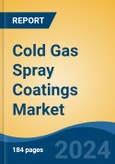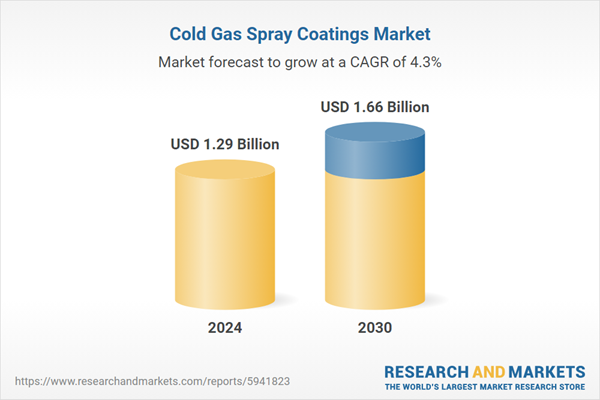Automotive is the fastest growing segment, North America is the largest market globally
Speak directly to the analyst to clarify any post sales queries you may have.
10% Free customizationThis report comes with 10% free customization, enabling you to add data that meets your specific business needs.
Key Market Drivers
The global cold gas spray coatings market is significantly influenced by the expanding adoption across critical end-use industries. Sectors such as aerospace, automotive, and energy increasingly rely on cold spray technology for its capacity to apply high-performance coatings without thermal distortion, which is essential for preserving the integrity of sensitive components. This adoption is underscored by robust industrial activity in these critical sectors. According to AMT-The Association For Manufacturing Technology, in February 2025, orders of manufacturing technology from the aerospace sector increased nearly 32% from 2023 to 2024, demonstrating heightened investment in production capabilities where cold gas spray solutions are vital for advanced material applications.Key Market Challenges
A significant challenging factor impeding the expansion of the global cold gas spray coatings market is the substantial initial capital expenditure required for cold gas spray equipment and its associated high-pressure gas systems. This considerable upfront investment acts as a direct barrier to entry for many potential industrial adopters, particularly for small and medium-sized enterprises that may lack the extensive financial resources to acquire such specialized machinery. The high cost increases the financial risk for companies considering adopting this advanced coating technology, thereby limiting its broader industrial integration and slowing market penetration. Illustrating the scale of investment in manufacturing capabilities.Key Market Trends
Additive Manufacturing Integration for Repair and Customization represents a significant trend, transforming how industries approach component longevity and performance. Cold gas spray technology, when integrated with additive manufacturing processes, allows for the precise deposition of materials to restore worn parts to their original specifications or to create customized geometries. This capability extends beyond conventional repair by enabling the fabrication of complex, high-performance components that were previously challenging or impossible to produce. According to the Aerospace Industries Association, in September 2024, the U. S. aerospace and defense sector surpassed $955 billion in sales in 2023, reflecting a 7.1 percent increase from the prior year, highlighting a robust market driving demand for advanced repair solutions.Key Market Players Profiled:
- Hannecard Roller Coatings, Inc.
- Bodycote plc
- Flame Spray Technologies BV
- VRC Metal Systems, LLC
- CenterLine (Windsor) Limited
- WWG Engineering Pte. Ltd.
- Praxair, Inc.
- Impact Innovations GmbH
- Concurrent Technologies Corporation
Report Scope:
In this report, the Global Cold Gas Spray Coatings Market has been segmented into the following categories:By Technology:
- High Pressure
- Low Pressure
By End Use:
- Automotive
- Aerospace
- Electrical and Electronics
- Oil and Gas
- Medical
- Utility
- Others
By Region:
- North America
- Europe
- Asia Pacific
- South America
- Middle East & Africa
Competitive Landscape
Company Profiles: Detailed analysis of the major companies present in the Global Cold Gas Spray Coatings Market.Available Customizations:
With the given market data, the publisher offers customizations according to a company's specific needs. The following customization options are available for the report:- Detailed analysis and profiling of additional market players (up to five).
This product will be delivered within 1-3 business days.
Table of Contents
Companies Mentioned
- Hannecard Roller Coatings, Inc.
- Bodycote plc
- Flame Spray Technologies BV
- VRC Metal Systems, LLC
- CenterLine (Windsor) Limited
- WWG Engineering Pte. Ltd.
- Praxair, Inc.
- Impact Innovations GmbH
- Concurrent Technologies Corporation
Table Information
| Report Attribute | Details |
|---|---|
| No. of Pages | 185 |
| Published | November 2025 |
| Forecast Period | 2024 - 2030 |
| Estimated Market Value ( USD | $ 1.29 Billion |
| Forecasted Market Value ( USD | $ 1.66 Billion |
| Compound Annual Growth Rate | 4.3% |
| Regions Covered | Global |
| No. of Companies Mentioned | 9 |









